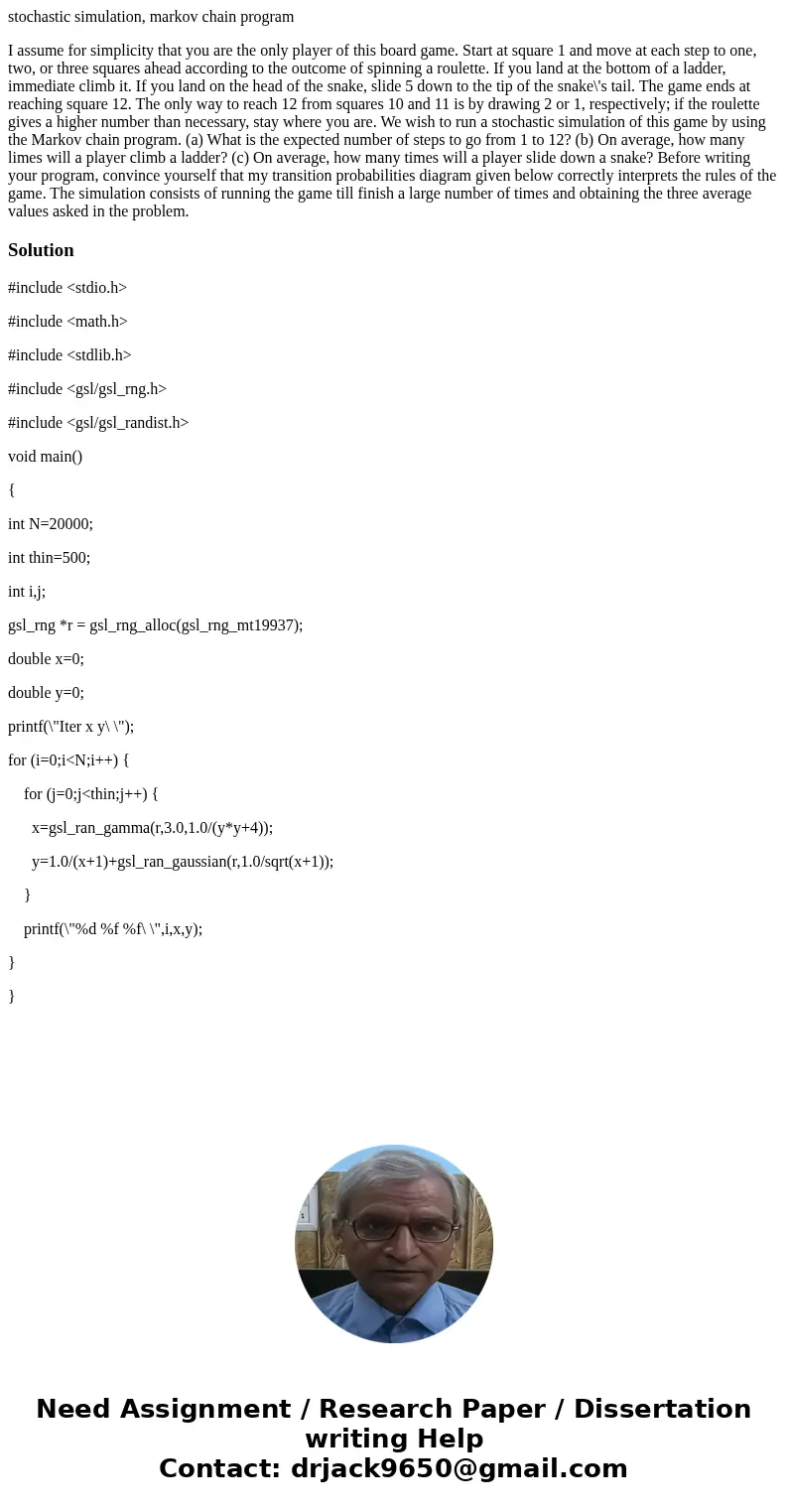stochastic simulation markov chain program I assume for simp
stochastic simulation, markov chain program
I assume for simplicity that you are the only player of this board game. Start at square 1 and move at each step to one, two, or three squares ahead according to the outcome of spinning a roulette. If you land at the bottom of a ladder, immediate climb it. If you land on the head of the snake, slide 5 down to the tip of the snake\'s tail. The game ends at reaching square 12. The only way to reach 12 from squares 10 and 11 is by drawing 2 or 1, respectively; if the roulette gives a higher number than necessary, stay where you are. We wish to run a stochastic simulation of this game by using the Markov chain program. (a) What is the expected number of steps to go from 1 to 12? (b) On average, how many limes will a player climb a ladder? (c) On average, how many times will a player slide down a snake? Before writing your program, convince yourself that my transition probabilities diagram given below correctly interprets the rules of the game. The simulation consists of running the game till finish a large number of times and obtaining the three average values asked in the problem.Solution
#include <stdio.h>
#include <math.h>
#include <stdlib.h>
#include <gsl/gsl_rng.h>
#include <gsl/gsl_randist.h>
void main()
{
int N=20000;
int thin=500;
int i,j;
gsl_rng *r = gsl_rng_alloc(gsl_rng_mt19937);
double x=0;
double y=0;
printf(\"Iter x y\ \");
for (i=0;i<N;i++) {
for (j=0;j<thin;j++) {
x=gsl_ran_gamma(r,3.0,1.0/(y*y+4));
y=1.0/(x+1)+gsl_ran_gaussian(r,1.0/sqrt(x+1));
}
printf(\"%d %f %f\ \",i,x,y);
}
}

 Homework Sourse
Homework Sourse